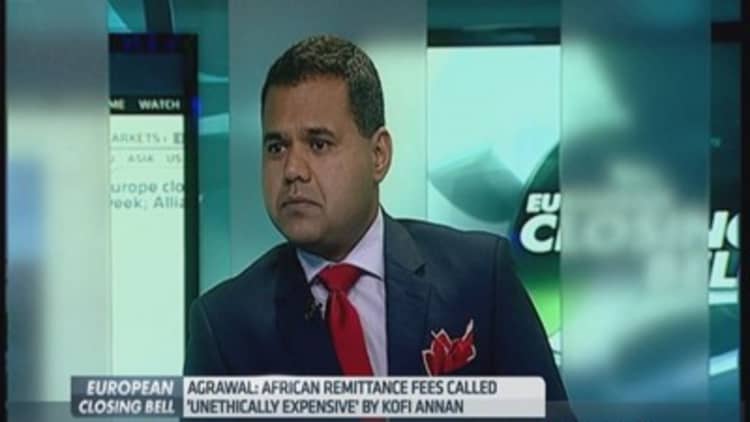Momentum in the Philippines, Asia's second-fastest growing economy, may dwindle in coming months as Citigroup warns of a potential slowdown in a key growth driver: remittances.
Remittances from overseas Filipino workers (OFWs) make up nearly 10 percent of Philippine gross domestic product (GDP) and hit an all-time record high of $26.9 billion in December.
But weakness in "third currencies," or major currencies excluding the greenback, such as the Japanese yen, Australian dollar or , could restrain future remittance growth, warned Jun Trinidad, economist at Citigroup, in a recent report.
Those "third currencies" have all weakened sharply against a broad range of currencies in recent months, including the , making for a tough foreign exchange trade for OFWs in those countries, Trinidad noted, adding that those currencies are expected to weaken even further ahead.
"Since prospects for JPY, EUR and other third currencies are expected to weaken substantially against the U.S. dollar by more than the Philippine peso, a portion of remittances, particularly from OFW earnings in non-USD currencies, faces material downside risk," Trinidad explained.
Over the past three months, the peso strengthened nearly 12 percent against the Aussie, 10 percent against the euro and 4 percent against the yen. Citigroup estimates that a 1 percent appreciation of the peso against the yen potentially lowers remittances from Japan by 1.6 percent, while a 1 percent rise against the euro decreases remittances from Europe by 1.3 percent.
"Remittances from Europe (three-year average share of 16 percent of total) and Japan (three- year average share of 4.2 percent) are vulnerable to currency risk since these flows are converted to U.S. dollars through banking channels," Trinidad said.

Indeed, remittances from both Europe and Japan have been slowing. Euro-area remittances fell an annual 8 percent in the fourth quarter, extending the third quarter's 13.8 percent on-year decline, according to Citigroup data. For Japan, flows rose by a meager 2.9 percent on year in the October-December period following double-digit gains in previous quarters.
Read MoreIs Philippine property getting bubbly?
While the majority of OFWs reside in the U.S., Australia and Japan are home more than 300,000 Filipinos, while in Europe, they account for 8.7 percent of overseas workers, according to data from government agencies.
Worry for nothing?
Not everyone is worried about the flows from the remittance tap. Eugenia Fabon Victorino, an economist for Southeast Asia at ANZ, told CNBC she expects healthy remittance growth from the U.S., bolstered by a stronger greenback, to offset any slowdown elsewhere, as 40 percent of remittances come from North America.
"Growth in total remittances will still be robust this year, averaging around 5-6 percent on the most conservative side," she said.
Another risk remittances face is the impact of cheaper oil prices in the Middle East, home to the second-largest group of OFWs. As oil-producing economies in the Arab world sustain revenue losses from lower oil prices, there are concerns that it could translate into slower job growth for OFWs.
However, past episodes haven't seen a meaningful correlation between the two factors, noted Rahul Bajoria, an economist at Barclays.
"Remittances have shown a fairly steady increase irrespective of what's happening elsewhere. Moreover, we have noticed a steady trend in the quality of OFW jobs as pay scales and deployment increases," he said.

